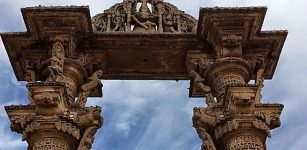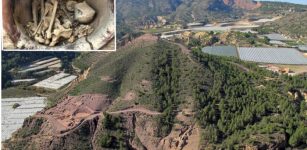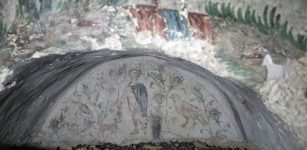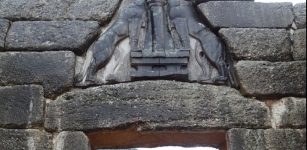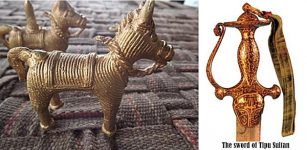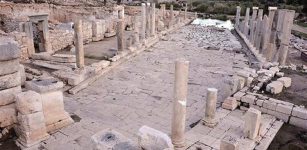Anundshög Burial Mound: One Of Sweden’s Richest And Largest Sacred Ancient Sites
MessageToEagle.com – Anundshög is a burial mound from about 500-700 AD; it is 9 meters (30 ft) high and 60 meters (200 ft) wide and this is the largest burial mound in Sweden.
Anundshög, located near Västerås in Västmanland, Sweden, contains 12 mounds, 10 stone circles, 14 standing stones and one, very impressive rune stone. There are also are five stone ships of various sizes; the largest of them is 53 meters long and 16 meters wide, in the vicinity of the mound.
It is believed that the area was a major center of royal power during the Iron Age, and this was also an important place around the 1300s. Anundshög was a part of Eric Street (in Swedish: ‘Eriksgata’) and several of the stones in the area mark this traditional path, through which, the chosen king rode past with his cortege to get his royal power confirmed by the people.
The mound was made of clay and was used for burning the dead whose remains were then covered with a cairn of stones, turf and soil. Many people participated in the building of Anundshög, the largest burial mound in Sweden and the remains around Anundshög clearly show that the area was the core of an important power center during the Iron Age.
Although the site contains many graves, people report the positive energies of the place and several healing places (one of them is the stone ship).
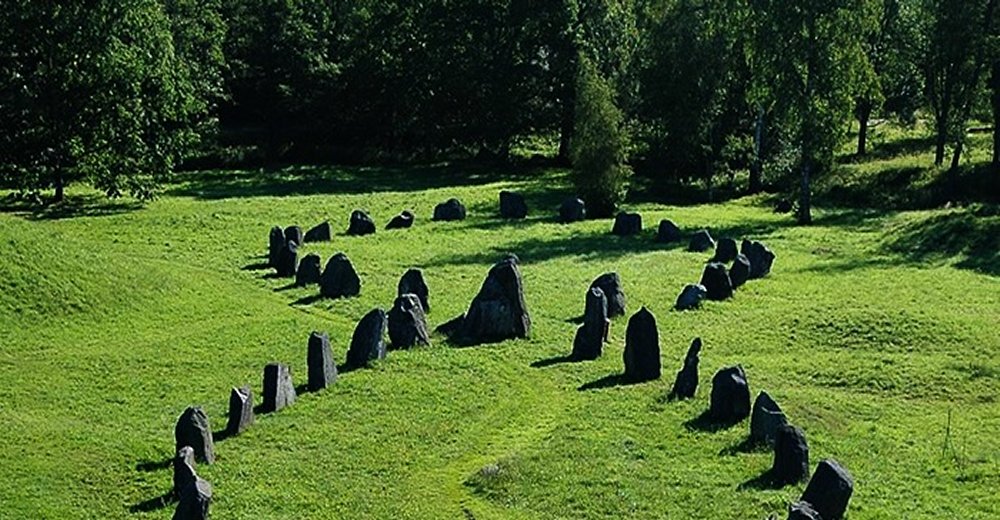
It seems that in early medieval times, someone deliberately tried to wipe out the power center and weaken its importance; the stone ships were destroyed and a runestone was overthrown.
See also:
Sweden’s Tanum And Skredsvik Petroglyphs: Thousands Of Spectacular And Intriguing Rock Art
Sweden’s Blue Maiden “Blåkulla” Island – Mythical Place With Dark Secrets Of Witches And Wizardry
Enigmatic Ale’s Stones – Sweden’s Megalithic Ship-Like Formation
More Fascinating Ancient Mysteries
The original name of the site is not preserved and remains unknown. During the Middle Ages, the site’s name was most probably replaced and since then, it is known as ‘Anundshög’.
Were the burial mound and its name, associated with the legendary Swedish king Anund (‘trail-blazer’ Bröt-Anund or ‘Anund the Land Clearer’ who reigned during the early 600s or the name is taken from the large runestone at the site?
Anundshög site has additionally 11 smaller burial mounds, most of them were looted long time ago; there are also 10 stone circles that are between 6 to 30 meters in diameter.
During the 1600s, much of the place was destroyed, which is believed was due to the advent of Christianity when similar sites were no longer accepted. Four of the five ships were restored and the fifth ship setting is still to recover.
The runestone at Anundshög, has a pattern and a runic inscription, different from other runes in Sweden. It was erected on the orders of a man named Folkvid in the 1000’s, who also helped to construct the stone ships.
In the middle of the runestone, a man and a woman are depicted and according to the inscription:
+ fulkuiþr + raisti + stainn + þasi + ala + at + sun + + sin + hiþin + bruþur + anutaR + uraiþr hik + runaR
“Folkvid raised all of these stones after his son Heden, Anund’s brother. Vred carved the runes…”
The rune stone was overturned evicted and moss-grown back in the 1660’s, according to Runic Inscriptions ‘Ransakningarna’ 1667.
Tibble maze used for all kinds of rites and dated to 100’s is located only 800 meters from Anundshög; formed of 2000-3000 stone, it represents one of Sweden’s labyrinths, usually used in fertility rituals or to contact the spirit world with the help of shamans, or medicine men.
Copyright © MessageToEagle.com All rights reserved. This material may not be published, broadcast, rewritten or redistributed in whole or part without the express written permission of MessageToEagle.com
Expand for references







